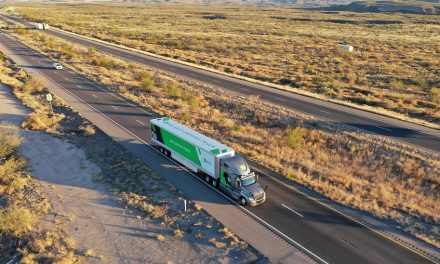
US DOT issues Federal Policy for safe testing and deployment of automated vehicles
The US Department of Transporation (DOT) has today (20 September) published a new document which sets performance criteria for self-driving vehicles, as well as offering guidelines for states which are looking to legislate for the use of automated vehicles. A number of US states have already legalised automated vehicles and companies include Google, Uber and Tesla have been running test programmes.
In an official statement posted on its website today, the DOT said that its new policy “lays the foundation for the next revolution in roadway safety”.
The DOT commented: The Federal Automated Vehicle Policy released today is a product of significant public input and stakeholder discussions, including two open public meetings this year and an open public docket for comments. The Department is also soliciting additional public comments for the next 60 days on the policy, which is published at www.transportation.gov/AV. Through a series of next steps and in response to public comments, DOT intends to update the policy annually.”
The White House issued a Fact Sheet yesterday which gave an outline of what the new Federal Automated Vehicles Policy aims to do.
According to the White House Fact Sheet: “DOT is issuing Federal policy to guide the responsible testing and deployment of automated vehicles. The policy package is composed of four sections:
1. Vehicle performance guidance for manufacturers, developers, and other organizations outlining a 15 point “Safety Assessment” for the safe design, development, testing, and deployment of highly automated vehicles, including a request that automakers sign and submit this safety assessment to certify that their vehicles are ready for public roads.
2. Model for state policy that presents a clear distinction between Federal and State responsibilities and recommends policy areas for states to consider with a goal of generating a consistent national framework for the testing and operation of automated vehicles while leaving room for learning and valuable state discretion.
3. Current regulatory tools that National Highway Traffic Safety Administration (NHTSA) can use to aid the safe development of automated vehicles, such as interpreting current rules to allow for appropriate flexibility in design, providing limited exemptions to allow for testing of nontraditional vehicle designs, and ensuring that unsafe automated vehicles are removed from the road.
4. New tools and authorities that NHTSA could consider seeking in the future to aid the safe and efficient deployment of new lifesaving technologies and ensure that technologies deployed on the road are safe. For example, NHTSA is seeking public feedback on whether to consider pre-approving novel automated vehicle technologies before they are allowed on public roads and whether to create a new Federal safety standard for revolutionary vehicle designs, such as ones that do not require a steering wheel or gas pedal.”
The White House added that NHTSA is also set to release a final enforcement guidance bulletin that will clarify how its recall authority applies to automated vehicle technologies. The White House explained what this means in practice: “If NHTSA determines that a vehicle is unsafe, it will use its authority to remove it from the road.”
The White House statement also advised that the “White House Frontiers Conference” will take place on 13 October in Pittsburgh. The event will “bring together some of the world’s leading innovators to discuss how investing in science and technology frontiers – including automated vehicles”. The choice venue is interesting: Uber has been running a pilot project offering customers taxi rides in autonomous vehicles in Pittsburgh.












